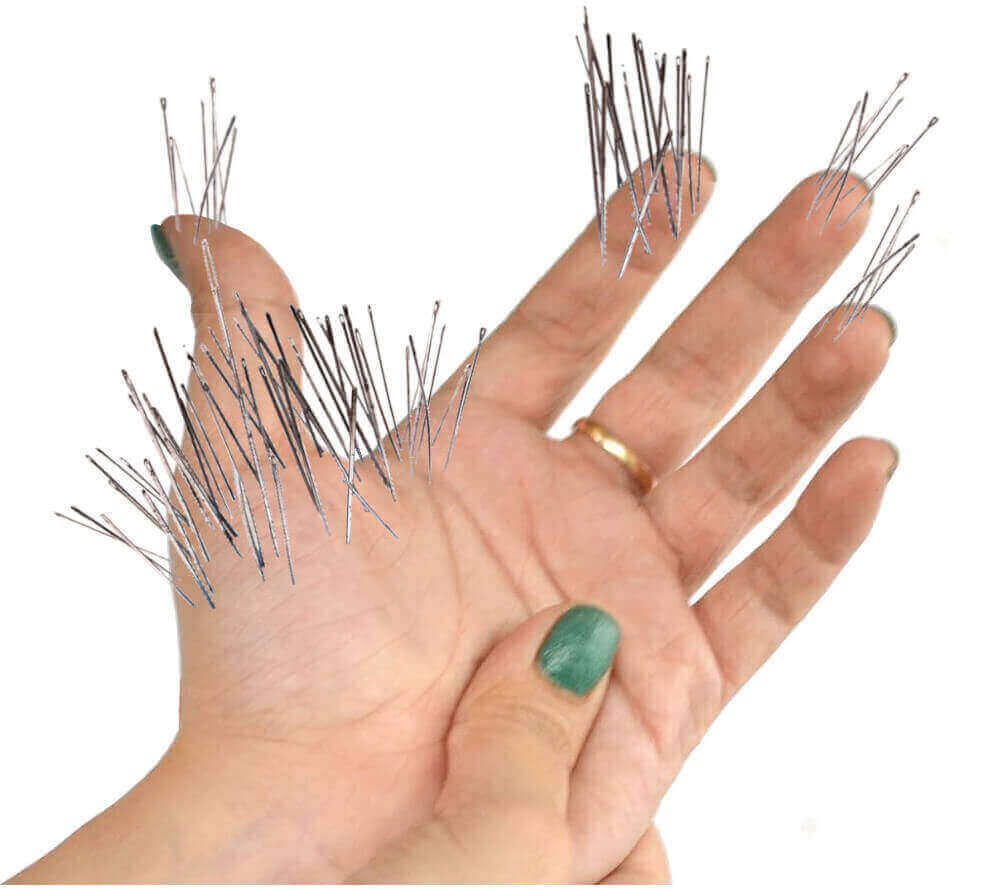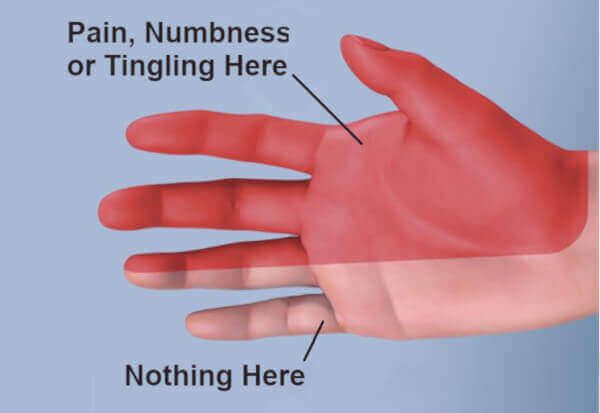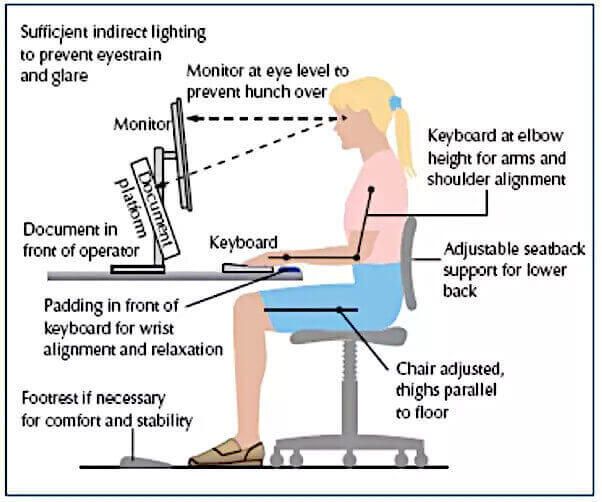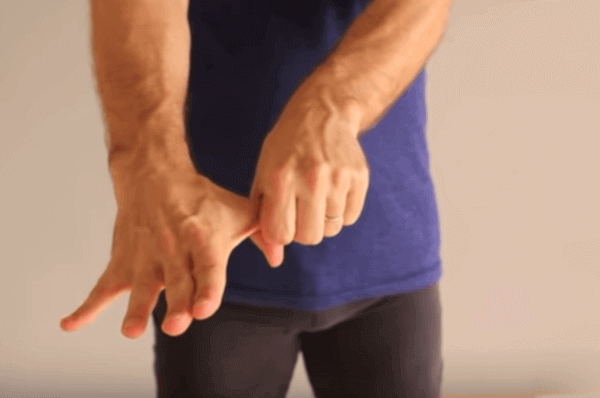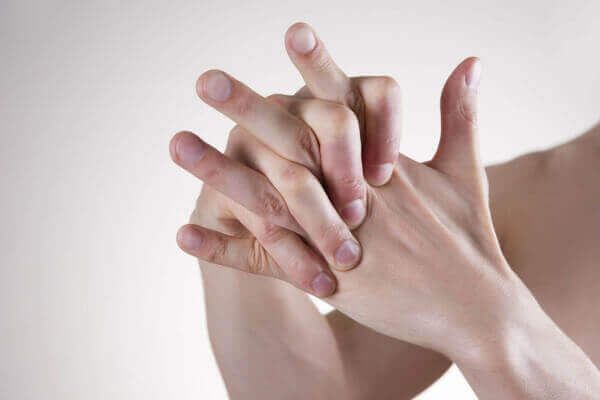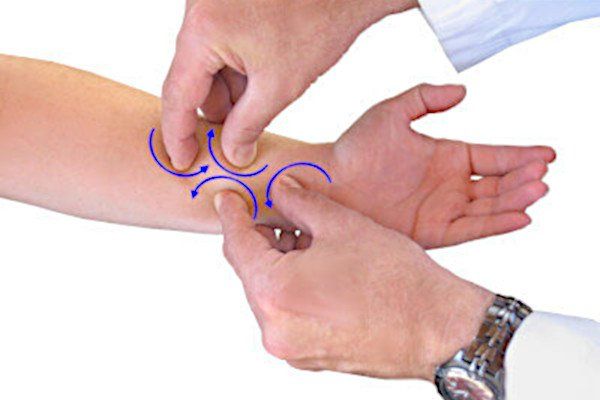How to Prevent Carpal Tunnel Syndrome
Here's how to prevent carpal tunnel from making your life miserable. Most doctors prescribe one or two of these time-tested techniques. But many doctors prefer to recommend all four of them.
They are simple and highly effective to prevent carpal tunnel from ever happening. By incorporating all four techniques it will insure you'll never be visited by this painful and numbing hand disorder.
The four techniques are:
- rest
- avoidance
- protecting your hand
- stretching exercises
In fact, you'd use these same techniques as treatment measures
if carpal tunnel symptoms have already begun.
This article details what you need to do in order to keep carpal tunnel away for good. And if you're already at high risk for getting this disorder (see below for the definition of "high risk"), then this is something you MUST do to prevent misery later on.
What is carpal tunnel syndrome?
Carpal tunnel syndrome is a disorder of the fingers and hand. It generally occurs in people with certain
risk factors, as listed below.
The
symptoms of carpal tunnel syndrome are straight forward. Each one varies in intensity. And you can have one or more of them simultaneously. They include:
- Pain
- Numbness
- Tingling or pins & needles
- Soreness
- Burning
- Puffy feeling
- Weakness
- Finger clumsiness
- Shooting electric shocks
These symptoms are concentrated in the fingers and palm of the hand. But the little finger is never affected. In some patients symptoms may extend up the arm to the elbow. Sometimes more than one of these symptoms is present at the same time - usually pain, numbness, and tingling occur together.
Carpal tunnel symptoms most often begin slowly, without you hardly noticing them. The most common early sign is when finger or
hand numbness wakes you up at night. You feel the need to shake out the numbness or hang your hand over the bed. When
pain is the primary symptom it's usually felt most in the thumb, pointer finger, and palm.
As the condition worsens, symptoms become present when you wake up in the morning. Eventually, as the disorder progresses further, they're present all day long. And the symptoms are much more intense.
Many people wonder if they have
wrist tendonitis instead of carpal tunnel. But there's a way you can tell. In the beginning, as symptoms are still mild, carpal tunnel appears
only
when your hand is resting. But wrist tendonitis symptoms appear
only
when your hand is working.
You can also take this
simple self-test to see if you have carpal tunnel or wrist tendonitis.
Who's at risk for getting carpal tunnel?
Risk factors
In general, there are certain
risk factors which increase the probability of your getting carpal tunnel syndrome. You can change some of these risk factors. But you have little control over the others.
High risk occupations
The NIH and CDC have identified high risk occupations which are known to have a high incidence of carpal tunnel syndrome. The incidence of carpal tunnel in many of these occupations is over
6 times higher than normal. The most high risk occupations include:
How to prevent carpal tunnel
Unfortunately, you can't easily change most of the risk factors associated with getting carpal tunnel syndrome. Being female, having a family history or arthritis are permanent. But the one important risk factor you certainly have control over is
your occupation.
In fact,
occupational hazards is among the most often-cited risk factor which contributes to getting carpal tunnel. Plus, you can do something about these hazards to lessen the risks!
Remember that
repetitive stress on the job is the culprit. While on the job, you can repetitively stress your hands in one of several ways:
- Wiggle your fingers rapidly and repeatedly (typing, piano playing)
- Repetitively grasp with all your fingers (grocery sorting, using a hairbrush)
- Pinch objects over and over again (using a scissors, holding fine instruments)
- Grip with force repeatedly (gripping a shovel, using power tools)
- Maintain a bent wrist (guitar playing, pushing carts)
- Forcefully bending the wrist (bowling, tennis, weightlifting)
- Twisting the wrist (using hand tools, stirring)
Does your
occupation
involve any one of the above hand motions & activities? If so, then you're at high risk for developing carpal tunnel. And knowing how to prevent carpal tunnel syndrome should be VERY HIGH on your to-do list.
Pay attention to your sitting posture!
As
COVID 19 sweeps across the world, more and more people are working from home. And given that most people don't
pay attention to their sitting posture, it's no surprise that more and more cases of carpal tunnel syndrome are being reported.
Good sitting posture is crucial to hand health. Why? The musculoskeletal forces during
bad
posture transmit up the spine and down the neck and shoulders, ending at your hands. Imbalance in any of those forces result in imbalance in the hand's biomechanics. The result is hand pain, numbness, and tingling due to carpal tunnel syndrome.
You should seriously consider
tips on improving your posture at home in order to avoid carpal tunnel syndrome. The diagram below highlights the key elements of good sitting posture.
Tips to prevent carpal tunnel with REST
Simple rest is one of the most important ways to prevent carpal tunnel syndrome. In fact, the National Institute for Occupational Safety and Health (NIOSH) says
taking regular breaks is one of the crucial things you can do to prevent most musculoskeletal disorders.
NIOSH
recommends taking rest breaks lasting up to 3 minutes when you're using your hands. During these breaks, it's most helpful if you can also:
- Drop your hands to your sides and shake them out
- Do fast hand stretches (more on this below)
- Stretch out your arms
- Stretch your back by arching backward
- Squeeze your shoulders together (forward and back)
Tips to prevent carpal tunnel with AVOIDANCE
One of the most obvious ways to prevent carpal tunnel syndrome is to
avoid
any
stressful hand activity. Of course, some jobs require certain activities that just can't be avoided. But you can minimize stressful forces on your hands with a few simple adjustments.
- Keep repetitive movements to a minimum. Perhaps you can alternate between types of activities to minimize repetitive strain. Along the same lines, avoid holding anything in your hand the same way for extended periods of time.
- Try to keep your wrists straight (in the
neutral position) when performing any hand activity. Maintaining a bent hand is very bad for the wrist.
- Adjust your posture. Whether sitting or standing, make sure you head, neck and spine are in a vertical column. The importance of
good posture cannot be overstated. As an example, when sitting at a desk, be sure to sit erect. Also make sure your hands and arms create right angles to your desk and your body.
See diagram above for details.
Tips to prevent carpal tunnel by PROTECTING YOUR HANDS
Safeguarding your hands means protecting them from external damage. You can do this in several ways.
- Use protective or padded gloves whenever you can. So many truck drivers have told me that the difference between wearing gloves to drive, versus no gloves is like night and day. Likewise, if your job requires using power tools, vibrating equipment, or tightly gripping hand tools, then use padded gloves.
- If you work outdoors in cold weather, also wear insulated gloves. Cold weather forces blood from your extremities. This is very bad if you're already at high risk for developing carpal tunnel syndrome. So thermally protect your hands outdoors.
- Be knowledgeable about wearing wrist braces. If you already have carpal tunnel symptoms, it's best to NOT wear a brace as you work. Instead, let your wrist move freely. A wrist brace only makes your wrist fight the brace while your hand is doing its regular job. But if you work with heavy loads, it's best to protect your wrist from overbending by using a wrist brace.
See below for more info about wrist braces.
Tips to prevent carpal tunnel with STRETCHING EXERCISES
I often tell patients,
"Do these stretches and you'll never see carpal tunnel syndrome."
It's absolutely true. If you're at high risk, and symptoms of carpal tunnel didn't start yet, you can completely avoid them with regular hand and finger stretches.
There are 4 key stretches everyone at high risk must do. These are called
core exercises. They're designed to stretch your flexor tendons so you can avoid carpal tunnel syndrome altogether.
These stretches are designed to lubricate the flexor tendons. They also break apart any adhesions on the tendons. Such
adhesions are responsible for causing carpal tunnel syndrome.
Best of all, each stretching exercise can be done quickly. In total, all four exercises take no more than 2 minutes to complete.
Do these stretching exercises
at least three times per day.
More is always better.
What if carpal tunnel symptoms already started?
The preventive measures above outline how to
prevent
carpal tunnel from happening in the first place. But what if symptoms are already present? What if the pain or numbness wakes you up at night?
That means by now, it's too late for prevention. You're therefore in the
treatment
phase. But if symptoms are only in the
mild stage, then consider yourself lucky. It's relatively easy to treat mild carpal tunnel, and with great success.
In contrast, if carpal tunnel symptoms are in the
severe stage, then it's much more challenging to treat and get good results. It's not impossible to reverse symptoms and restore your hands. It just requires more aggressive therapy.
Treating
mild
carpal tunnel symptoms
If carpal tunnel symptoms have just begun, treating is relatively simple. You should still take all the preventive measures listed above. Doing so will prevent carpal tunnel from returning.
In addition, you must get started on 2 other remedies:
night bracing
and
more intense stretching exercises.
These are outlined below.
Night bracing for mild symptoms
Night bracing your wrist is a treatment that most doctors advocate to treat mild carpal tunnel symptoms. You must wear a carpal tunnel night brace every night until symptoms are gone.
However, be aware that not just any wrist brace will work. In fact, most braces sold in stores like Walmart, Walgreens, and CVS will worsen your condition. That's because they are not designed for carpal tunnel syndrome (even though the packaging says it is).
Here's how to tell: see the image above. If the brace has a
palmar spine (a metal support on the palm surface) then it's not made for carpal tunnel syndrome. A spine on the palmar surface will push into your wrist, further irritating your condition. In contrast, a
certified carpal tunnel night brace has no such spine.
Also, if you already have symptoms of carpal tunnel syndrome,
never
wear a wrist brace while you work. Doing so only makes your hand fight the brace while it's performing its regular activity. That further irritates your condition.
More intense stretches for mild symptoms
The stretching exercises above are great for any stage of carpal tunnel syndrome. But more thorough stretching exercises will work best to relieve mild symptoms.
These more thorough stretching exercises can be found
on this link. They are broken down into wrist exercises, finger and hand stretches, forearm stretches, neck and shoulder exercises.
They should be performed at least 3 times per day. More is better. But you should especially do these exercises
once per 2-3 hours
of working with your hands.
Treating
severe carpal tunnel symptoms
Treating severe stage carpal tunnel syndrome uses the same protocol as treating mild symptoms, with one exception. You must include
myofascial release massage.
This technique is nearly
97% effective against carpal tunnel syndrome. And that includes moderate and severe stage patients. The reason it has a high effectiveness rate is because myofascial release massage breaks up the adhesions causing carpal tunnel syndrome.
Once the adhesions are broken apart, symptoms dissolve. Best of all,
the effect is permanent.
The downside to this remedy is that myofascial release must be performed by someone else. It requires two hands to knead the tissue over your forearm. The kneading transmits to the flexor tendons to loosen restrictions.
The therapy must be applied daily and for at least 30 days to provide effective results.
What happens if nonsurgical remedies don't work?
When nonsurgical remedies fail to provide relief from carpal tunnel syndrome, there are two other options available. They are more aggressive therapies, and reserved only for severe stage carpal tunnel syndrome. They include
steroid injections and
carpal tunnel surgery.
Steroid injections ("steroid shots") are effective in
about 45% of patients. And when the injections are effective, they wear off in a few weeks to months afterward. In other words, the relief is only temporary.
Carpal tunnel surgery has similar results. About
57% of operated patients are not satisfied with their results by 2 years. The main reason for reports of dissatisfaction is return of symptoms or persistent pain.
However, since most people get good results with the nonsurgical remedies discussed above, steroid shots and surgery are becoming less and less popular.
Conclusion
Just how to prevent carpal tunnel is not complicated. It requires resting your hands, avoiding stressful activities, protecting your hand from damage, and a dedication to daily stretching exercises. These techniques will almost guarantee carpal tunnel will not visit your life. But if it does, there are proven and effective ways to eliminate symptoms for good.


